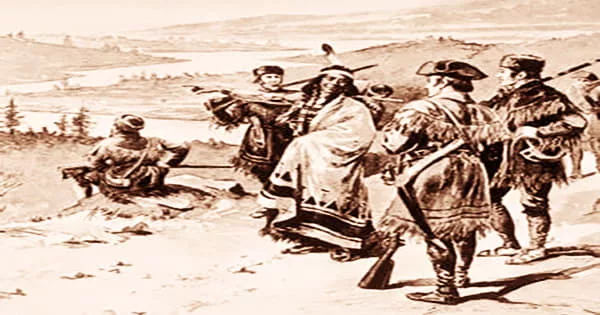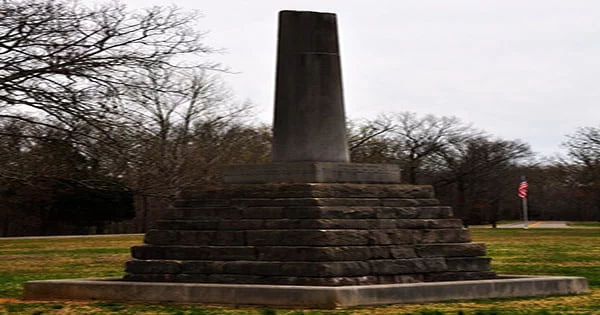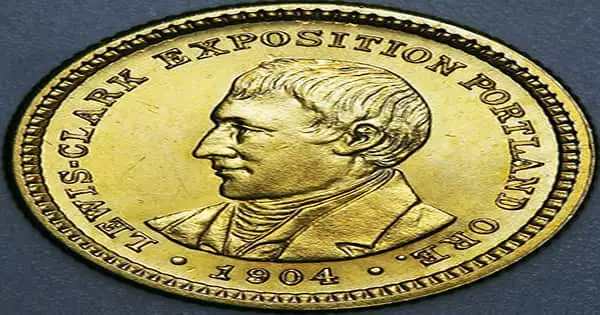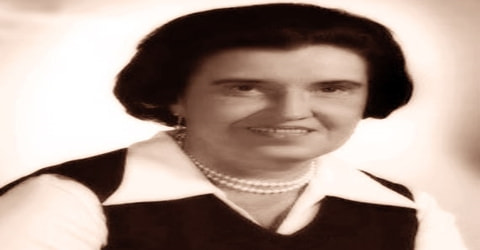Full name: Meriwether Lewis
Date of birth: August 18, 1774
Place of birth: Locust Hill Plantation, Albemarle County, Colony of Virginia (now Ivy, Virginia)
Date of death: October 11, 1809 (aged 35)
Place of death: Hickman County, Tennessee, U.S. (now near Hohenwald, Tennessee)
Occupation: Explorer, Soldier, Politician
Father: William Lewis
Mother: Lucy Meriwether Lewis
Early Life
Meriwether Lewis (August 18, 1774 – October 11, 1809) was an American explorer, soldier, politician, and public administrator who led the Lewis and Clark Expedition to the Pacific Northwest in 1804–06, with William Clark. The expedition’s goal was to explore the Louisiana Purchase (Louisiana land purchased from France in 1803), establish trade with and control over the Indians, and claim the Oregon Country and Pacific Northwest for the United States before the European countries.
This expedition also planned to collect scientific data and knowledge about indigenous, including flora and wildlife, in order to gain valuable information about the region’s geographic character. Lewis later became the governor of the Louisiana Territory’s Upper Louisiana Territory. In 1809, he died of gunshot wounds in what could have been a murder or suicide.
Although the Louisiana Purchase did not become official until July 1803, President Thomas Jefferson secretly requested funding for the expedition in January 1803. To honor both Lewis and Clark, gold ‘Lewis and Clark Exposition dollars’ were produced, as well as postal stamps. He has had many plants and subspecies named after him. As a symbol of respect, Lewis County, Tennessee, and Lewis County, Washington, as well as academic institutions and several US Navy vessels, were named after him.

Childhood and Educational Life
Lt. William Lewis and Lucy Meriwether Lewis had Meriwether Lewis as their first son and a second child on August 18, 1774, in Albemarle County, Virginia, at the Lewis family house on Locust Hill. In 1779, while serving in the Continental Army, Lewis’ father died. His mother later married John Marks and moved her family to Georgia, only to be widowed once more by 1792.
Lewis did not receive a formal education until he was 13 years old, but his talents as a hunter and outdoorsman improved during his time in Georgia. His parents were cousins at one time. The family had a long-standing friendship with Thomas Jefferson’s family, and Jefferson had known Lewis since boyhood. Lewis would frequently go hunting in the dead of winter in the middle of the night with only his dog.
He was fascinated by natural history from an early age, and it became a lifelong love for him. His mother taught him how to forage for therapeutic plants in the outdoors. His half-brother, John Hastings Marks, was born in 1785, and his half-sister, Mary Garland Marks, was born in 1788. Lewis was transferred back to Virginia at the age of 13 to receive individual tutoring. Nicholas Lewis, his father’s older brother, became his guardian.
Lewis graduated in 1793 from ‘Liberty Hall’ (now known as ‘Washington and Lee University’). He created and managed the Locust Hill estate while keeping an eye on the flora and fauna. Following the death of John Marks in 1792, his mother and half siblings returned to Locust Hill.
Personal Life
Lewis had no family of his own, never having found a wife or fathered children.
Working and Political Career
Lewis returned to Virginia and began operating Locust Hill under the supervision of his uncle. In 1794, he enlisted in the Virginia militia to put down the Whiskey Rebellion in Pennsylvania. The next year, during the Northwest Indian War against Miami Chief Little Turtle, he enlisted in the army and served in William Clark’s Chosen Rifle Company for a short time. Lewis’ military career progressed quickly, from ensign (1795) to lieutenant (1799) to captain (1800), with stops at army recruiter and paymaster.
President Jefferson appointed Lewis as his personal secretary and aide-de-camp in 1801. Soon after, Jefferson extended another invitation to Lewis to head an expedition west of the Mississippi. Jefferson’s interest in the area grew even stronger after the purchase of more than 800,000 square miles of territory from France in 1803, known as the Louisiana Purchase.
He was a great choice because of his extensive frontier skills, military service, physical endurance, intellectual prowess, and literary abilities. Lewis went to Philadelphia to study astronomy, botany, zoology, and medicine with some of the best scientists and doctors in the country. He also began making preparations for the mission, including recruiting men and procuring equipment, boats, and supplies.
Lewis and Clark’s two-year excursion was the United States’ first transcontinental voyage to the Pacific Coast; yet, Lewis and Clark arrived 12 years after Sir Alexander Mackenzie had done it overland in Canada. Lewis chose Clark to be his voyage partner and share command with him. Sacagawea, the Shoshone Indian wife of a French-Canadian fur trader, accompanied them.
The goal of this trip was to investigate the territory, establish trade with the locals, and establish US authority over the region ahead of European governments. Native Americans were acclimated to trading with European traders and were connected to global marketplaces, according to the expedition.
The Lewis and Clark Expedition covered 8,000 miles (13,000 kilometers) over three years (1804–06), leading the Corps of Discovery down the Ohio River, up the Missouri River, across the Continental Divide, and all the way to the Pacific Ocean. Lewis was the field scientist, recording botanical, zoological, meteorological, geographical, and ethnographic data. He also collected plant, animal, and mineral specimens to send back to the East for further research.
In November of 1805, the Corps of Discovery arrived at the Pacific Ocean. They spent the winter in present-day Oregon, where they established Fort Clatsop. In 1806, Lewis and Clark split up on the journey back to explore additional land and find faster routes home. In late July, a gang of Blackfeet Indians attempted to steal from Lewis and his men, putting them in grave peril. In the ensuing confrontation, two Blackfeet were slain.
The success of their expedition bolstered the American belief of “manifest destiny,” the notion that the US was destined to span North America from Atlantic to Pacific. In March 1807, President Jefferson appointed him (Lewis) as governor of the Upper Louisiana Territory. His drinking habits and tardiness in accepting duty as governor strained his relationship with Jefferson.
Lewis arrived at St. Louis in March 1808 after serving for a full year. Lewis attempted to manage enslaved people when administering his mother’s plantation prior to the westward voyage, but he abandoned that job and did not have a valet during the expedition, unlike William Clark, who carried his slave York with him. York was given responsibilities, but Lewis permitted Clark to monitor him; York and Sacagawea were also given votes at expedition meetings.
Lewis later employed John Pernia, a free African-American man, as his valet. Pernia joined Lewis on his final excursion, despite the fact that his earnings were far behind schedule. Attempting to rule the territory from the east proved impracticable, and Lewis’ absence emboldened Frederick Bates, the territorial secretary, who undermined Lewis’ authority by imposing his own laws on trading and mining permits and filling positions with favoritism.
When Lewis arrived in Missouri, he argued with Bates over Indian and territorial concerns, causing an irreparable schism between them. Lewis set off for Washington, D.C. on September 3, 1809, to settle a dispute over the nonpayment of drafts he had drawn against the War Department while governor of the Upper Louisiana Territory.
It greeted warmly almost everywhere Lewis and the other members of the expedition they went on their way to Washington. As the explorers went through, many villages staged special ceremonies to celebrate their return. Lewis also attempted to publish the journals he and Clark kept throughout their epic journey. Lewis, who was known for his bad moods, developed a drinking problem and ignored his duties as governor.
His contributions to science, Western American adventure, and the mythology of great globe explorers are incalculable. The Louisiana Purchase in 1803 effectively doubled the size of the United States. Lewis and Clark sketched and documented the region’s flora and animals, as well as the indigenous people.
Retirement and Later Life
In 1809 Lewis, age 35, embarked for Washington, D.C., to explain his public expenditures and to clear his name. Leaving the Mississippi River at Chickasaw Bluffs (Memphis, Tenn.), he set out along the Natchez Trace, stopping for the evening at Grinder’s Stand near present-day Hohenwald, Tenn., about 70 mi (110 km) from Nashville.
Despite his terrible death, Lewis contributed to the transformation of the United States by exploring vast uncharted land in the American West. His work inspired a lot of people to follow in his footsteps and sparked a lot of interest in the area.
Death and Legacy
On September 3, 1809, Lewis set out for Washington, D.C. He intended to settle a dispute with the War Department overdrafts he had drawn against them when the governor of the Upper Louisiana Territory, which had left him in potentially ruinous debt. Lewis died in an inn near Nashville, Tennessee, on October 11, 1809. He had been on his way to Washington, D.C., at the time.

The majority of historians believe he committed suicide, while a few claim he was murdered. The cause of his death is still unknown. Near Grinder’s Stand, he was laid to rest. The burial was initially unmarked. In 1848, the state of Tennessee built a monument over Lewis’ tomb.
For years, Lewis’ legacy was missed, misjudged, and tainted by his claimed suicide. Nonetheless, his contributions to science, western adventure, and the lore of great global explorers are incalculable.
Awards and Honours
The gold Lewis and Clark Exposition dollars struck for the Lewis and Clark Centennial Exposition feature both Lewis and Clark. They were created in 1904 and 1905 and are one of the earliest commemorative coins produced in the United States.

On the occasion of the 200th anniversary of ‘Lewis and Clark expedition’, two commemorative USPS stamps, showing portraits of Meriwether Lewis and William Clark, were released on May 14, 2004.
The plant genus Lewisia, which includes the bitterroot (Lewisia rediviva), along with Lewis’ woodpecker (Melanerpes lewis) and the westslope cutthroat (Oncorhynchus clarki lewisi) is named after Lewis.
Three U.S. Navy vessels have been named in honor of Lewis: the Liberty ship SS Meriwether Lewis, the Polaris armed nuclear submarine USS Lewis and Clark and the supply ship USNS Lewis and Clark.
In 1965, Meriwether Lewis was inducted into the Hall of Great Westerners of the National Cowboy & Western Heritage Museum.
















